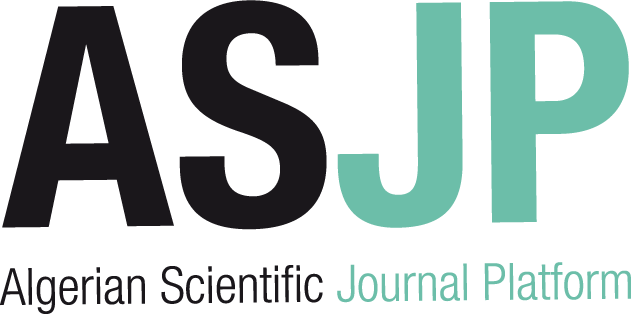| Titre : |
Study of the effect of surface treatments on the corrosion resistance of AlMgSi aluminum alloys In A NaCl environment |
| Type de document : |
document électronique |
| Auteurs : |
Fatima Mehareb, Auteur ; Manel Badoud, Auteur ; Ahmed Amrouche, Directeur de thèse ; Mohammed Khalfa, Directeur de thèse |
| Editeur : |
[S.l.] : [s.n.] |
| Année de publication : |
2025 |
| Importance : |
1 fichier PDF (4.5 Mo) |
| Note générale : |
Mode d'accès : accès au texte intégral par intranet.
Mémoire de Projet de Fin d’Études : Métallurgie. Génie des Matériaux : Alger, École Nationale Polytechnique : 2025
Mémoire en collaboration avec le centre de recherche nucléaire de Draria.
Bibliogr. p. 72-75 |
| Langues : |
Anglais (eng) |
| Mots-clés : |
Aluminum alloy
Corrosion phenomena
Surface treatment processes
Pickling
Aluminum hydroxide
Aluminum trihydroxid |
| Index. décimale : |
PL00225 |
| Résumé : |
Quality control on metallic surfaces is an essential aspect of the manufacture of fuel plates for research reactors, and relates directly to optimal performance and longevity. Chemical pickling is a vital step in fuel plate production, and will remove contaminants and surface conditions which may treat corrosion inhibitors. The objective of this study is to investigate the effect of surface treatments applied either separately or together with a treatment of aluminum hydroxide, on the electrochemical behavior of AlMgSi aluminum alloy, which is the standard construction material of fuel plates. The goal of this study , based on the outcome of surface treatment protocol assessment, is to assess the optimum surface treatments for minimizing the degradation of the cladding and thereby minimizing the corrosion susceptibility.
The surface treatment used in this work is passivation at different temperatures, specifically Boehmite at 100 °C and Bayerite at 70 °C, combining characterization methods (optical microscopy, SEM, XRD) and electrochemical measurements. The influence of pretreatments on passivation was studied. The Boehmite passivation layer formed after NaOH pickling alone is less uniform than on a surface that has been cleaned, pickled, and neutralized. Electrochemical results confirm that the formation of a Boehmite layer under carefully controlled autoclave conditions significantly enhances the corrosion resistance of the AA6061 alloy. The Boehmite surface obtained from the complete treatment, including pickling (T3), offered the best protection among all the tested treatments. |
Study of the effect of surface treatments on the corrosion resistance of AlMgSi aluminum alloys In A NaCl environment [document électronique] / Fatima Mehareb, Auteur ; Manel Badoud, Auteur ; Ahmed Amrouche, Directeur de thèse ; Mohammed Khalfa, Directeur de thèse . - [S.l.] : [s.n.], 2025 . - 1 fichier PDF (4.5 Mo).
Mode d'accès : accès au texte intégral par intranet.
Mémoire de Projet de Fin d’Études : Métallurgie. Génie des Matériaux : Alger, École Nationale Polytechnique : 2025
Mémoire en collaboration avec le centre de recherche nucléaire de Draria.
Bibliogr. p. 72-75 Langues : Anglais ( eng)
| Mots-clés : |
Aluminum alloy
Corrosion phenomena
Surface treatment processes
Pickling
Aluminum hydroxide
Aluminum trihydroxid |
| Index. décimale : |
PL00225 |
| Résumé : |
Quality control on metallic surfaces is an essential aspect of the manufacture of fuel plates for research reactors, and relates directly to optimal performance and longevity. Chemical pickling is a vital step in fuel plate production, and will remove contaminants and surface conditions which may treat corrosion inhibitors. The objective of this study is to investigate the effect of surface treatments applied either separately or together with a treatment of aluminum hydroxide, on the electrochemical behavior of AlMgSi aluminum alloy, which is the standard construction material of fuel plates. The goal of this study , based on the outcome of surface treatment protocol assessment, is to assess the optimum surface treatments for minimizing the degradation of the cladding and thereby minimizing the corrosion susceptibility.
The surface treatment used in this work is passivation at different temperatures, specifically Boehmite at 100 °C and Bayerite at 70 °C, combining characterization methods (optical microscopy, SEM, XRD) and electrochemical measurements. The influence of pretreatments on passivation was studied. The Boehmite passivation layer formed after NaOH pickling alone is less uniform than on a surface that has been cleaned, pickled, and neutralized. Electrochemical results confirm that the formation of a Boehmite layer under carefully controlled autoclave conditions significantly enhances the corrosion resistance of the AA6061 alloy. The Boehmite surface obtained from the complete treatment, including pickling (T3), offered the best protection among all the tested treatments. |
|


 Ajouter le résultat dans votre panier Faire une suggestion Affiner la recherche
Ajouter le résultat dans votre panier Faire une suggestion Affiner la rechercheStudy of the effect of surface treatments on the corrosion resistance of AlMgSi aluminum alloys In A NaCl environment / Fatima Mehareb (2025)







 PL00100
PL00100 


